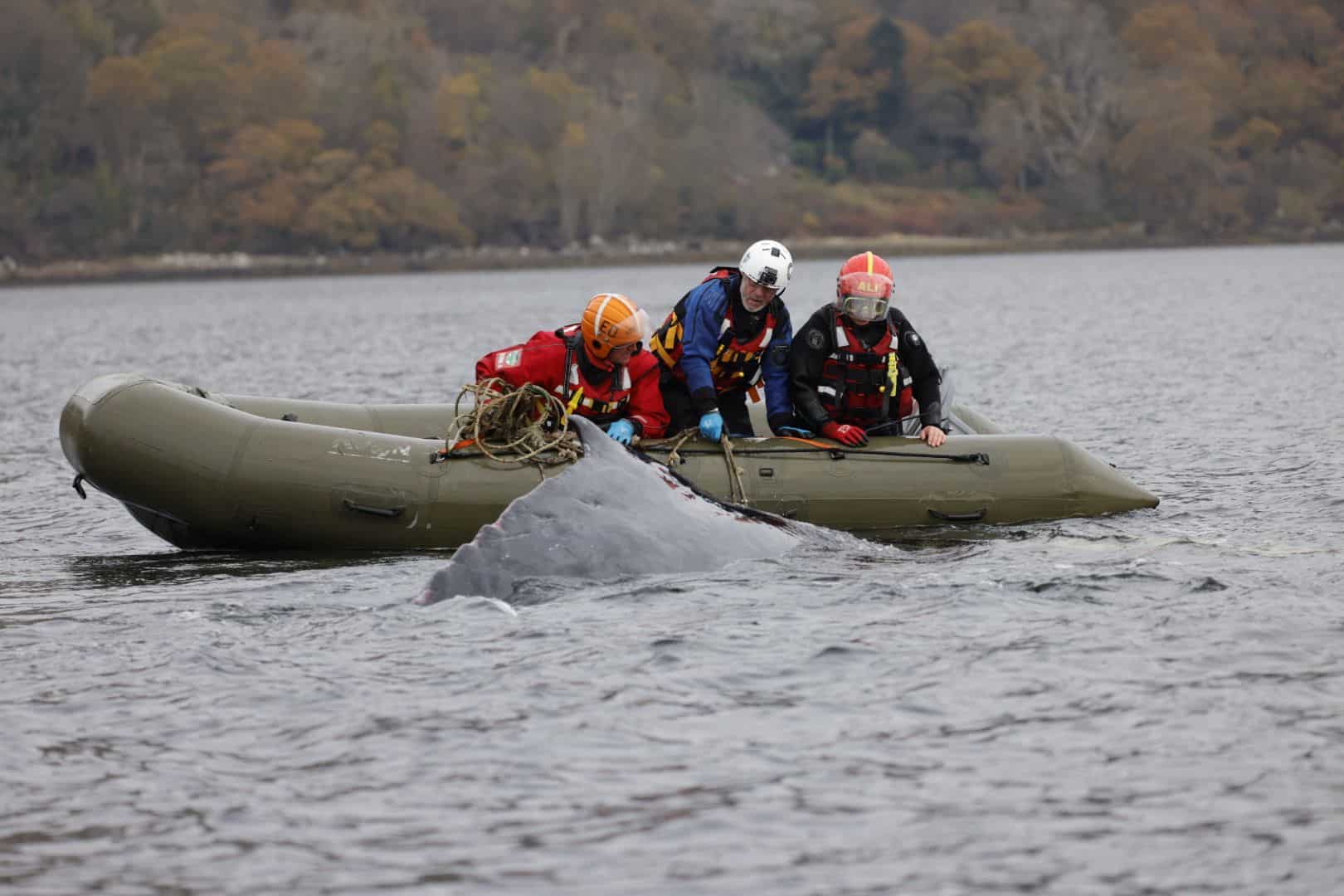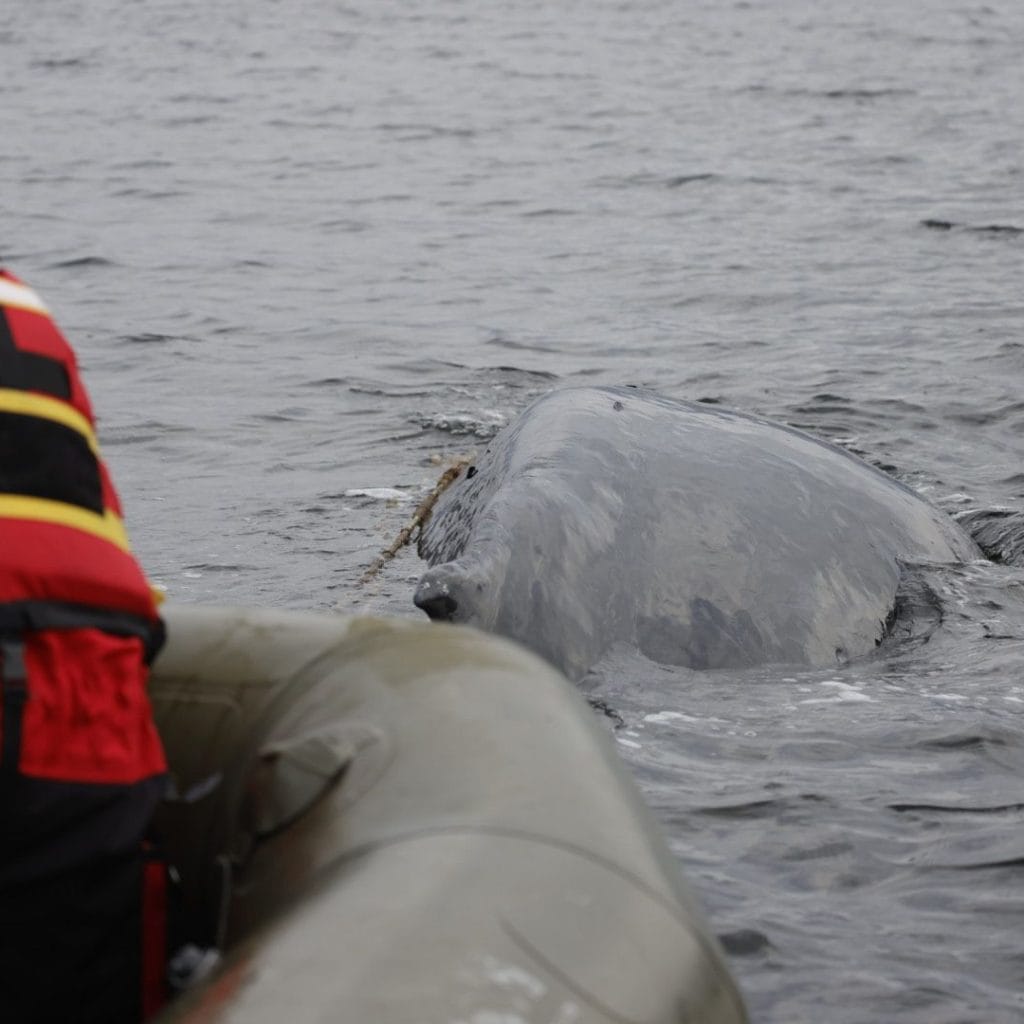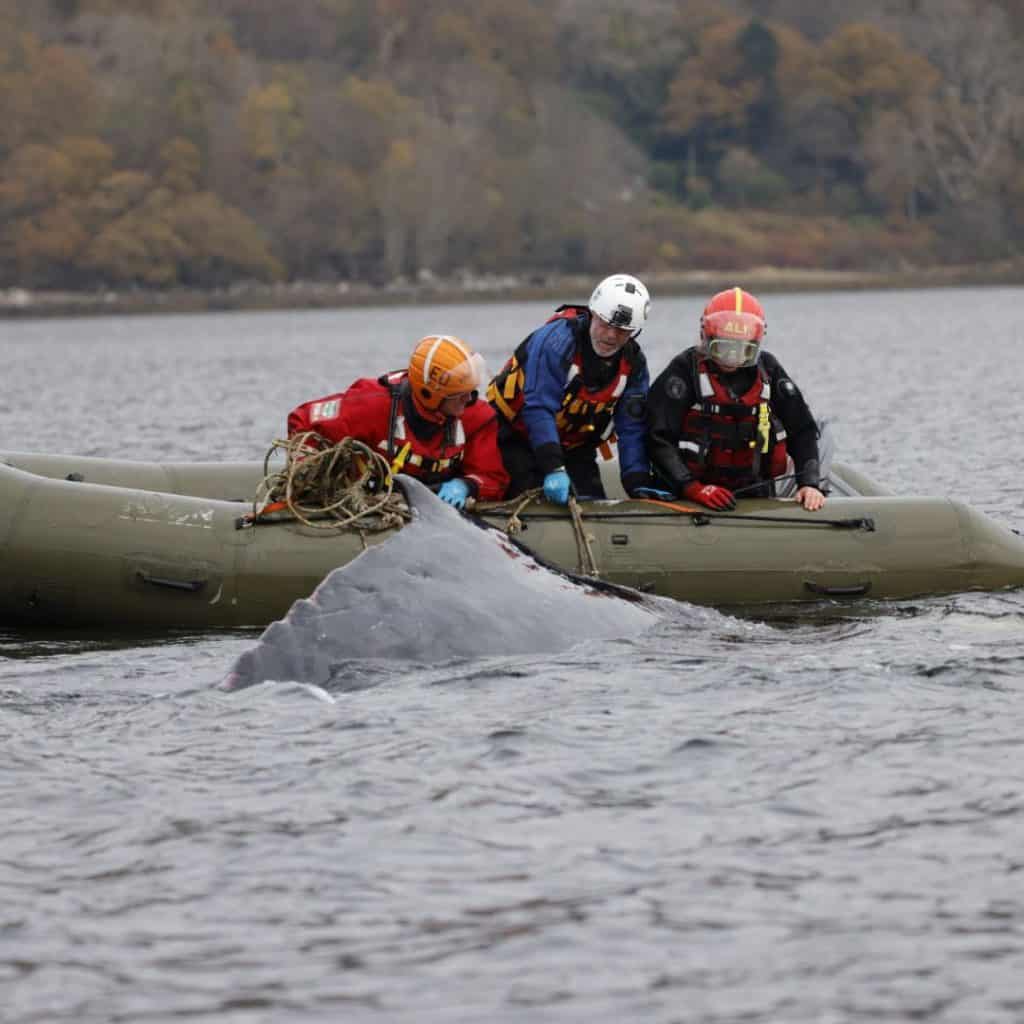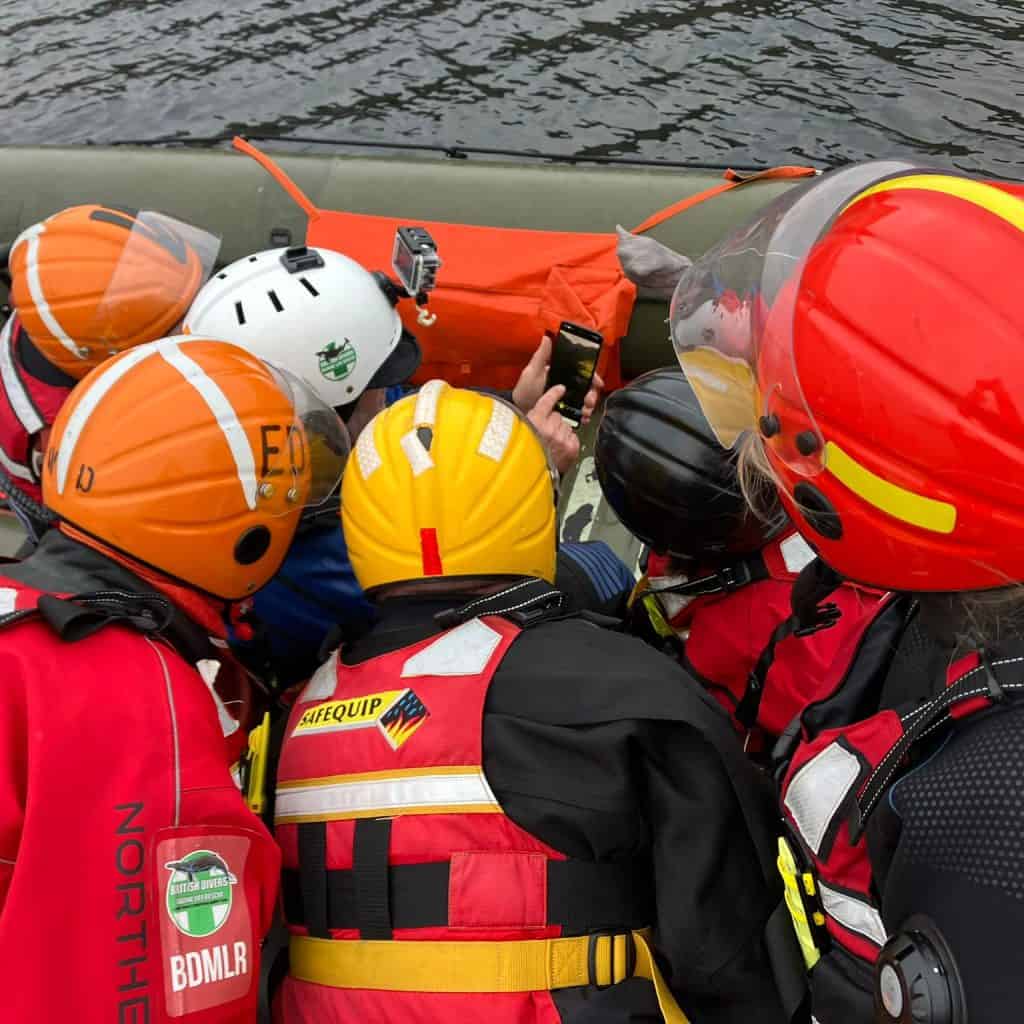
Photo: Cath Bain
On Monday 4 November British Divers Marine Life Rescue received a call about a humpback whale in trouble in Loch Fyne, a sea loch off the Firth of Clyde. The whale had been seen the previous evening but concerns weren’t raised until the following morning when the whale appeared to have slowed down and wasn’t moving from one area of the loch. Trained BDMLR Marine Mammal Medics were called out to assess the situation and to get a better picture of what was happening. After several hours of observation and feedback from locals who reported the whale as being caught in anchored creel lines, BDMLR’s specialist Large Whale Disentanglement Team (LWDT) were called.
The LWDT mobilised through the early hours of Tuesday 5 November whilst formulating their plan for the rescue ahead. Cutting a whale free without prior planning and expertise can lead to it free-swimming still entangled in line or netting, which also makes the whale much harder to locate, and so the team must carefully plan how to approach and remove entanglements in the most stress-free manner to affect a successful rescue.
At first light, the team launched their rescue boats, loaded with specialist equipment and departed to locate the whale. This was easily done thanks to excellent information given by the first informants. Once found, the team used 360 cameras to gain an accurate view on how and where the whale was entangled and also to allow the whale to become accustomed to the boats moving around it.
The humpback was entangled to the sea bed, along with loose wraps of line around its entire body, two lines wrapped tightly around its head, and one looped and twisted twice through its mouth. It was crucial to understand the way the whale was entangled, so that it can be successfully and completely disentangled, and also so the team knew which equipment and methods to use.
Cut by cut, the lines were successfully removed from the whale and final views of it underwater showed it to be clear. It quickly swam away and was seen a short while later free from line and free swimming. An exhausted, but disentangled whale.
We would like to extend our thanks to: our local Medics who monitored the whale; Louisa and Peter Walker of Ard Na Slaite and Thistle guest house; Steve McLaughin for his boat, time and effort to help locate the whale; Ian Arnold of Strachur mooring and pontoons association; Jason Coles, BDMLR Medic with Wreckspeditions Dive Charters for assisting in locating the whale and supporting the team; Inverary boat crew; and Argyll Caravan Park.
And of course our utmost thanks goes to the incredible Medics during the rescue: Boonie (Incident Commander), James McKenzie (Rescue Technician Operations), Ali Jones (Rescue Technician Operations), Edward Billington (Rescue Technician Operations), Ivy Owens (Rescue Technician Operations), Sara Macmillan (Rescue Technician Operations), Cath Bain (Rescue Technician Logistics), Trevor Wright (Onshore Logistics Team Lead Monday 4th), Em Mayman (Onshore Logistics Team Lead Tuesday 5th).
Every rescue our LWDT attends is classed as a large scale incident. Members of the team travel from all round the UK at a moments notice to where an imperilled cetacean may be. Mobilising our team to every possible rescue alert costs us thousands of pounds every year. Please consider donating to our team’s efforts to help them replace kit when used during rescue.
Donate to our Large Whale Disentanglement Team here.
Photos: Cath Bain


